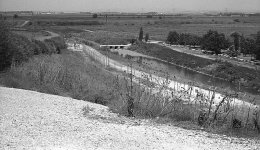alexz
Well-known
After getting acquinted a bit with Tri-X, I was willing to try out a slow BYW film, started out with Plus-X. Shot a roll at ISO 100, developed in HC-110 according to DevChart recommendations: dill. H at 20 deg. C for 10 minutes. Agitation remained to be the one I used to with Tri-X: continuous during first 30 seconds, 3 inversions per each subsequent minute.
The results appear to be proving overdevelopment due to the majority of scenes exhibit highlights quite pushed up, often burnt out, while the overall contrast of the scene supposed to be yet manageable (I used to obtain a good one of such in Tri-X).
There are few examples attached. My regular processing flow goes though scanning by Nikon film scanner, no wet printing, so that this is what I'm trying to fit for.
I also surprized to see the grain, albeit being noticeably less coarse then of Tri-X, but yet the difference is not quite as big as I woudl expect from ISO 100 film comparative to what I used to in 400 film such as Tri-X. Plus-X (processed as mentioned above) appears to be quite grainy for slow film (for my liking).
Now the questions is raised: assuming it was overdeveloped (say, by 15-20%), will overdevelopment impact grain ? Can it cause perceived grain increase ?
I'll shoot another Plus-X roll but then will use 15-20% shorter development time (approx 8-8.5 minutes) to try to hold back the highlights.
I'll be intrested to hear your experience with Plus-X in HC-110 as about recommended times, etc...
Also, after trying to achieve satisfying results in HC-110, I'll try Perceptol with Plus-X, hope it will show some worthy results.
The results appear to be proving overdevelopment due to the majority of scenes exhibit highlights quite pushed up, often burnt out, while the overall contrast of the scene supposed to be yet manageable (I used to obtain a good one of such in Tri-X).
There are few examples attached. My regular processing flow goes though scanning by Nikon film scanner, no wet printing, so that this is what I'm trying to fit for.
I also surprized to see the grain, albeit being noticeably less coarse then of Tri-X, but yet the difference is not quite as big as I woudl expect from ISO 100 film comparative to what I used to in 400 film such as Tri-X. Plus-X (processed as mentioned above) appears to be quite grainy for slow film (for my liking).
Now the questions is raised: assuming it was overdeveloped (say, by 15-20%), will overdevelopment impact grain ? Can it cause perceived grain increase ?
I'll shoot another Plus-X roll but then will use 15-20% shorter development time (approx 8-8.5 minutes) to try to hold back the highlights.
I'll be intrested to hear your experience with Plus-X in HC-110 as about recommended times, etc...
Also, after trying to achieve satisfying results in HC-110, I'll try Perceptol with Plus-X, hope it will show some worthy results.





